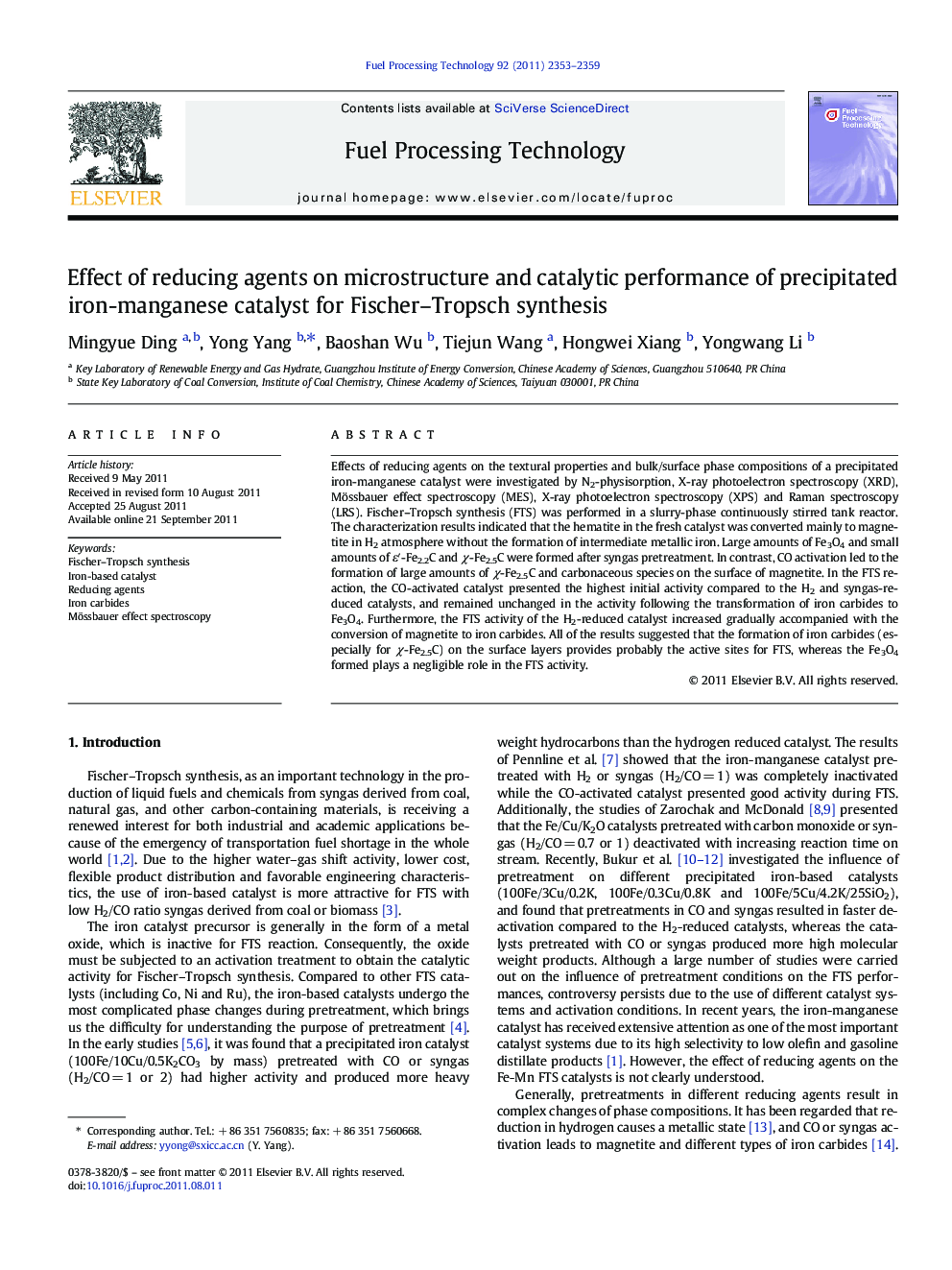| کد مقاله | کد نشریه | سال انتشار | مقاله انگلیسی | نسخه تمام متن |
|---|---|---|---|---|
| 210527 | 461715 | 2011 | 7 صفحه PDF | دانلود رایگان |

Effects of reducing agents on the textural properties and bulk/surface phase compositions of a precipitated iron-manganese catalyst were investigated by N2-physisorption, X-ray photoelectron spectroscopy (XRD), Mössbauer effect spectroscopy (MES), X-ray photoelectron spectroscopy (XPS) and Raman spectroscopy (LRS). Fischer–Tropsch synthesis (FTS) was performed in a slurry-phase continuously stirred tank reactor. The characterization results indicated that the hematite in the fresh catalyst was converted mainly to magnetite in H2 atmosphere without the formation of intermediate metallic iron. Large amounts of Fe3O4 and small amounts of ε′-Fe2.2C and χ-Fe2.5C were formed after syngas pretreatment. In contrast, CO activation led to the formation of large amounts of χ-Fe2.5C and carbonaceous species on the surface of magnetite. In the FTS reaction, the CO-activated catalyst presented the highest initial activity compared to the H2 and syngas-reduced catalysts, and remained unchanged in the activity following the transformation of iron carbides to Fe3O4. Furthermore, the FTS activity of the H2-reduced catalyst increased gradually accompanied with the conversion of magnetite to iron carbides. All of the results suggested that the formation of iron carbides (especially for χ-Fe2.5C) on the surface layers provides probably the active sites for FTS, whereas the Fe3O4 formed plays a negligible role in the FTS activity.
The microstructures of a precipitated iron-manganese catalyst undergo obvious change under different reducing agents. A corresponding relationship exists between magnetite, iron carbides, carbonaceous species and Fischer–Tropsch synthesis performances.Figure optionsDownload as PowerPoint slideHighlights
► The formation of χ-Fe2.5C on the surface layers provided the active sites for Fischer–Tropsch synthesis reaction.
► The magnetite formed in the surface regions played a negligible role in the FTS activity.
► The formation of surface amorphous carbonaceous species did not restrain the catalytic activity for FTS.
Journal: Fuel Processing Technology - Volume 92, Issue 12, December 2011, Pages 2353–2359